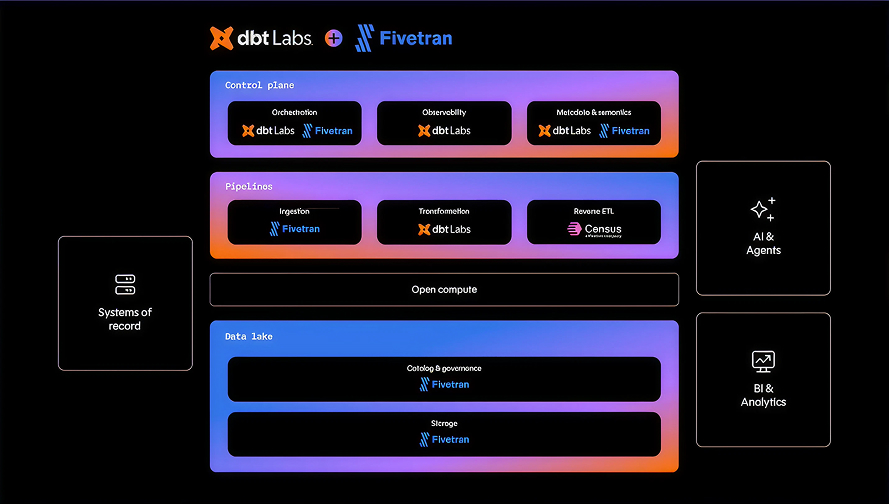Data modeling serves as the bedrock for successful analytics initiatives, shaping how organizations understand and leverage their data assets. Effective data modeling is crucial for managing growing data volumes and complexity in modern businesses. The evolution of data modeling approaches reflects the changing landscape of data management, with new techniques emerging to address the challenges of modern analytics. This post explores key concepts, challenges, and best practices in data modeling for analytics, drawing insights from data engineer and consultant Ben Rogojan, known as “Seattle Day Guy” and recognized for his expertise in data modeling and analytics.
This post is part of INNER JOIN, a live show hosted by Select Star. INNER JOIN is all about bringing together thought leaders and experts to chat about the latest and greatest in the world of data governance and analytics. For more details, see Select Star’s LinkedIn page.
Table of Contents
- Key Concepts in Data Modeling
- Types of Data Models
- Challenges in Modern Data Modeling
- Best Practices for Effective Data Modeling for Analytics
- The Role of Data Catalogs in Model Management
- Case Study: Facebook's Data Modeling Journey
- Emerging Trends in Data Modeling
Key Concepts in Data Modeling
Before getting deep into data modeling for analytics, you should know some key terms: entities and relationships, granularity, and fact and dimension tables.
- Entities and relationships form the foundation of data modeling, translating real-world concepts into structured representations. This approach enables data teams to capture complex business processes within their models. In an e-commerce context, entities like 'Customer', 'Order', and 'Product' interconnect through relationships mirroring actual business operations.

- Granularity is a critical aspect of data modeling, determining the level of detail captured. It directly impacts analytics comprehensiveness and system performance. For example, choosing between daily or hourly sales data storage can significantly affect query speed and storage needs. Data teams must balance providing detailed insights with maintaining efficient processing.

- Fact and dimension tables are the building blocks of dimensional modeling, organizing data for analytical purposes. Fact tables contain quantitative metrics, while dimension tables offer descriptive attributes providing context. This separation enables flexible querying across various dimensions. For instance, a sales fact table might include revenue and units sold, while related dimension tables could cover customer demographics, product details, and time periods.

Types of Data Models
Data models come in various forms, each serving a specific purpose in the data management lifecycle. Understanding these different types is crucial for effective data governance and utilization. Let's explore two main categories of data models, transactional and analytical, and the progression from conceptual to physical implementations.
Transactional and analytical models serve different purposes in data management. Transactional models focus on real-time processing for daily operations, prioritizing speed and consistency. Analytical models, however, handle complex queries and reporting, often working with historical data and aggregations across multiple dimensions.

Data modeling progresses from conceptual to logical to physical models. Conceptual models capture high-level business concepts, logical models define structured entities and relationships, and physical models consider specific database optimizations. This process ensures the final model meets business needs and performs efficiently in real-world scenarios.
Challenges in Modern Data Modeling
Modern data modeling presents numerous challenges as organizations strive to harness their data assets' full potential. Today's complex data ecosystems and demands for real-time insights have pushed traditional modeling approaches to their limits. Teams face obstacles like balancing performance with flexibility and integrating diverse data sources.
Balancing performance and flexibility is a persistent challenge. Data models must adapt to evolving business requirements without compromising query efficiency, often requiring trade-offs between current optimization and future agility. For example, a highly denormalized model might offer excellent query performance but prove difficult to modify as needs change.
Integrating diverse data sources adds complexity, requiring strategies to maintain consistency and relevance. Data engineers grapple with quality discrepancies, schema mismatches, and varying granularity levels across sources. The adoption of real-time streams alongside batch processing further complicates maintaining a coherent, up-to-date model.
To address these challenges, organizations explore innovative approaches like hybrid modeling techniques, dynamic schema evolution, and metadata-driven modeling. These strategies aim to create adaptable data models that evolve with business needs while delivering performance for timely analytics and decision-making.
Best Practices for Effective Data Modeling for Analytics
Effective data modeling for analytics requires a thoughtful approach that balances technical considerations with business needs. By following key best practices, organizations can create robust data models that support insightful analysis and drive informed decision-making.
1. Understand business concepts
Effective data modeling begins with a deep understanding of business concepts, ensuring accurate representation of processes and requirements. This foundation enables optimization for reporting and business intelligence needs, tailoring the model for efficient analysis and common query patterns.
2. Document models and metadata
Documenting models and metadata is crucial for maintaining clarity and consistency across the organization. Comprehensive documentation facilitates easier maintenance, reduces misinterpretation risks, and supports knowledge transfer and onboarding of new team members.
3. Be consistent with naming
Consistent naming conventions are crucial for creating intuitive and easily navigable data models. Clear guidelines for naming tables, columns, and relationships benefit both technical and non-technical users while facilitating process automation and governance policy application.
4. Review and optimize models regularly
Regularly reviewing and optimizing data models is crucial to keep them aligned with evolving business needs and technological capabilities. This iterative process, involving performance analysis and user feedback, allows organizations to enhance their analytical capabilities and maintain relevant data assets.
5. Take into account your data ecosystem
Data modeling must account for data warehouses and lakes in the ecosystem, as these technologies offer distinct approaches to storage and access. When structuring data across these platforms, modelers need to weigh factors like query performance, data volume, and integration requirements.
The Role of Data Catalogs in Model Management
Data catalogs are essential in modern data modeling, acting as central hubs for metadata management and documentation. They streamline data asset discovery and understanding across organizations. By providing data lineage visibility, catalogs like Select Star help maintain quality, ensure compliance, and optimize models. Usage analytics offer insights into data model utilization, identifying high-value assets and improvement opportunities. As data ecosystems grow more complex, catalogs become crucial for fostering collaboration, enhancing governance, and driving informed decisions. Their ability to connect technical and business users makes them vital in the modern data stack, enabling agile data modeling and management approaches.
Case Study: Facebook's Data Modeling Journey
Facebook's data modeling journey provides insights for organizations handling large-scale data challenges. The company tackled massive data volumes and globally distributed teams by implementing automated documentation and discovery processes, streamlining their complex data ecosystem management and enabling effective global collaboration with a unified understanding of data assets.
Rogojan described how Facebook's data modeling approach evolved to handle rapid growth and changing needs. They implemented a hybrid system balancing centralized and distributed modeling, allowing teams to create custom structures while maintaining consistency. Metadata management and lineage tracking played crucial roles in ensuring data quality and trust. Automated systems documented models and captured usage patterns, helping teams identify key datasets and optimize frequently accessed information. This proactive governance approach kept data accessible and actionable across the organization, enhancing insight generation and decision-making capabilities.
Emerging Trends in Data Modeling
As data volumes grow and analytics become more complex, new data modeling approaches are emerging to address traditional challenges. The One Big Table approach, creating a single denormalized table, simplifies querying but introduces trade-offs. Cloud data warehouses offer new scalability and performance opportunities. Machine learning integration automates aspects of model design. Other trends include AI-assisted modeling, increased focus on governance and compliance, and convergence of operational and analytical models. These developments are reshaping data management practices for more agile and efficient analytics.
Data modeling principles continue to evolve, adapting to the changing needs of modern analytics. As organizations strive to derive more value from their data assets, effective data modeling practices will remain crucial. The future of data modeling will likely see further integration of advanced technologies, with a continued focus on balancing performance, flexibility, and governance to meet the ever-growing demands of data-driven decision-making. Book a demo with Select Star to discuss your data modeling needs.









